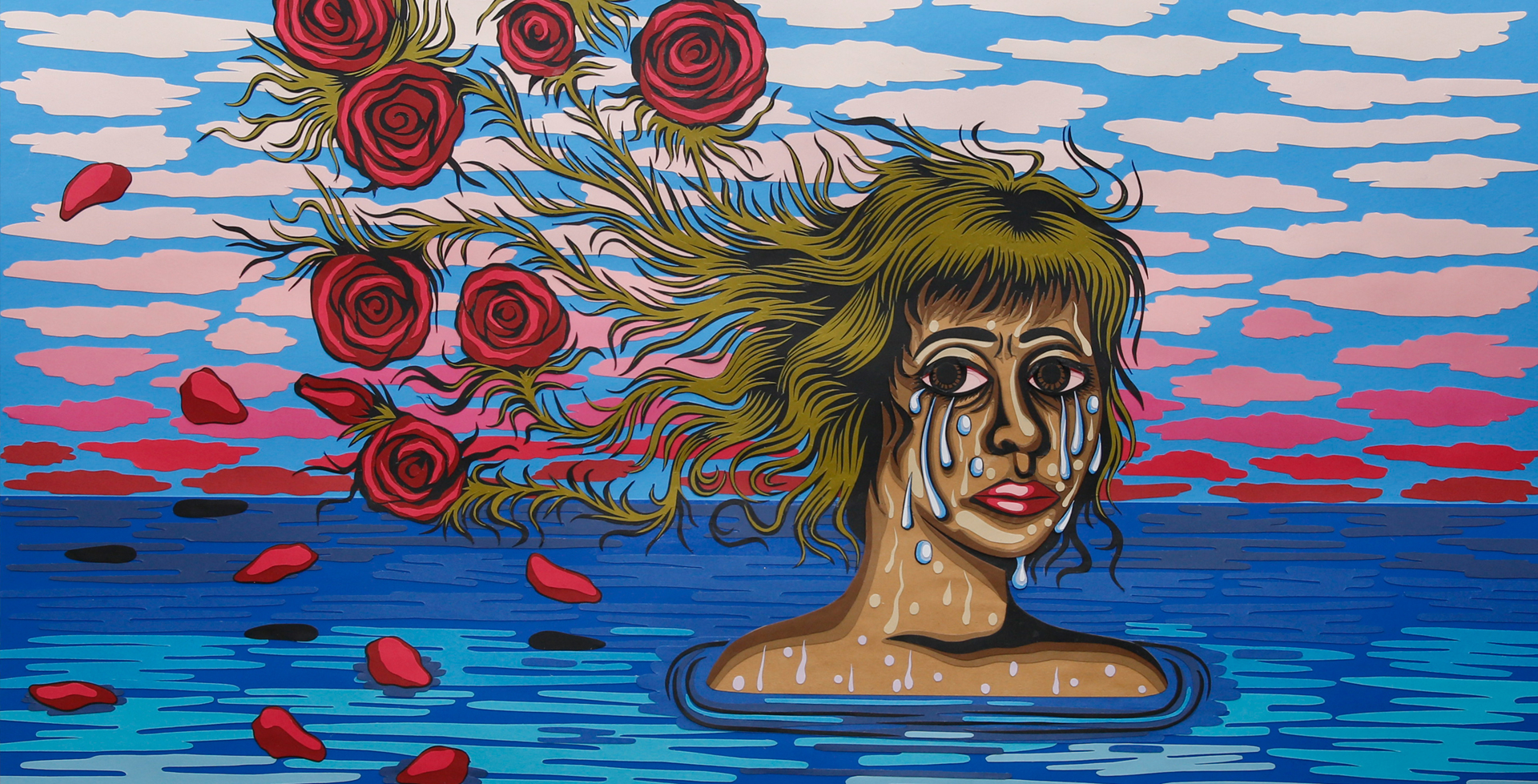
by Seyde Garcia | @seydeg
In Women Who Run with the Wolves, Clarissa Pinkola Estés explores the complex and cyclical nature of the creative process, describing how our past experiences, emotional wounds, and external environments shape our creative journey, portraying creativity as intensely personal and intricately tied to our relationship with ourselves. She writes:
“The Life/Death/Life nature causes fate, relationships, love, creativity, and all else to move in large and wild patterns, one following the other in this order: creation, increase, power, dissolution, death, incubation, creation, and so on.”
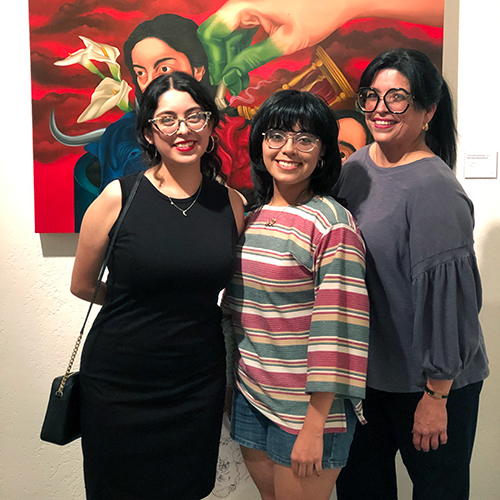
This concept is reflected in Millicent Alvarado’s work, where each of her finely crafted artworks contribute to her growth, transformation, and renewal.
Alvarado, born in 2000, is an emerging artist based in Corpus Christi, Texas. Her work primarily focuses on 3D paper and fiber sculptures, charged with a strong sense of feminine energy. Her artistic journey has been deeply influenced by her mother, who nurtured her early bond with art, and her sister Franceska Alvarado, an artist herself, who has played a pivotal role in Millicent’s development. In June of last year, during Franceska’s exhibition Catharsis at Presa House Gallery, Millicent was invited by the gallery owner and director, Rigoberto Luna, to present her first solo show in the same space, marking a significant milestone in her career.
Each piece in Alvarados entrancing solo exhibition Behind Four Eyes, Behind Four Walls embodies the storytelling qualities that have captivated Alvarado since childhood. It blends influences from the psychedelic art of the 1960s and 1970s with the decorative elegance of Art Nouveau, particularly the works of Czech artist Alfons Mucha.
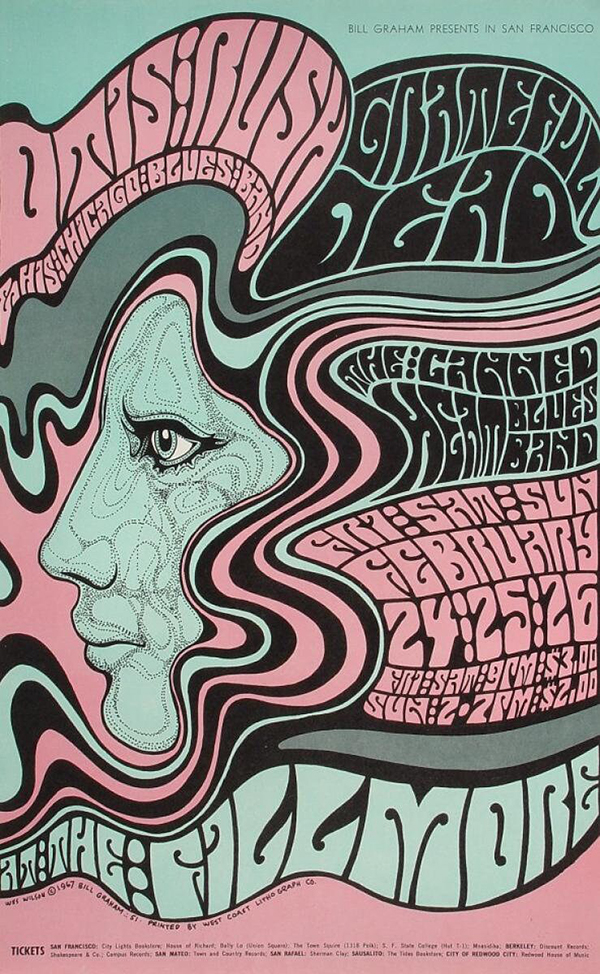
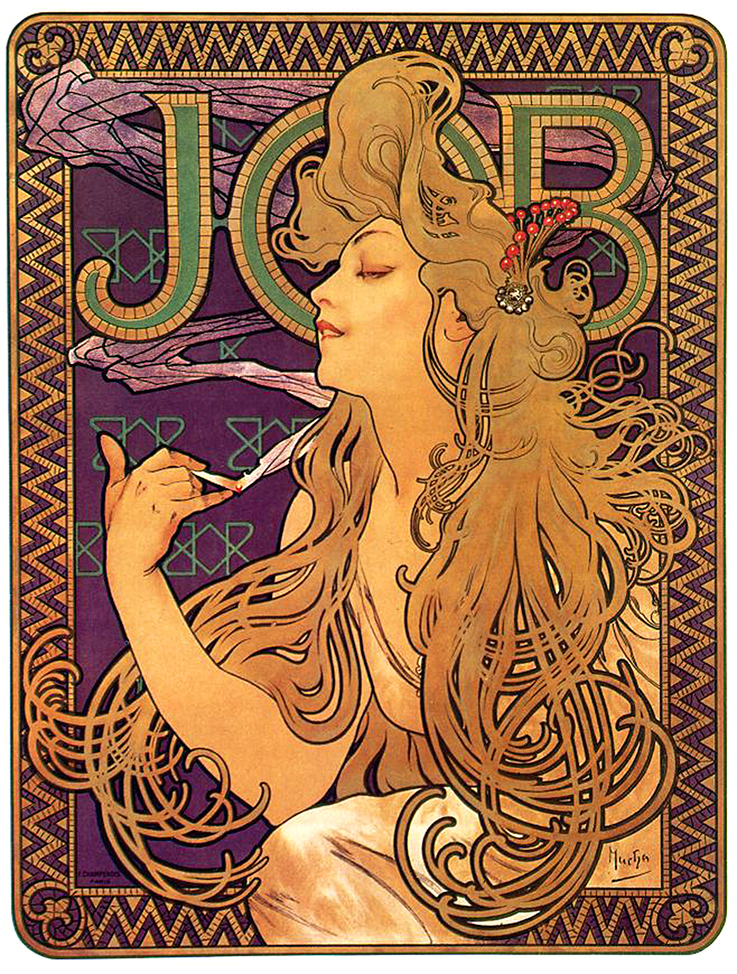
Every detail is part of a narrative that is uniquely her own but tangible and resonates with each of us as we gaze into the elements in a spellbinding experience that ultimately envelops us in an immersive installation.
Inspired by origami, her signature technique utilizes basic materials such as paper, glue, and a pair of second-hand industrial scissors she discovered at a thrift store seven years ago. The intricate details in her layered 2D and 3D works are astonishing, creating a mesmerizing sense of color and depth that defies her materials’ simplicity.
For Alvarado, the creation of this piece also functions as a ritual, allowing her to symbolically remove situations, individuals, or concerns that no longer serve her.
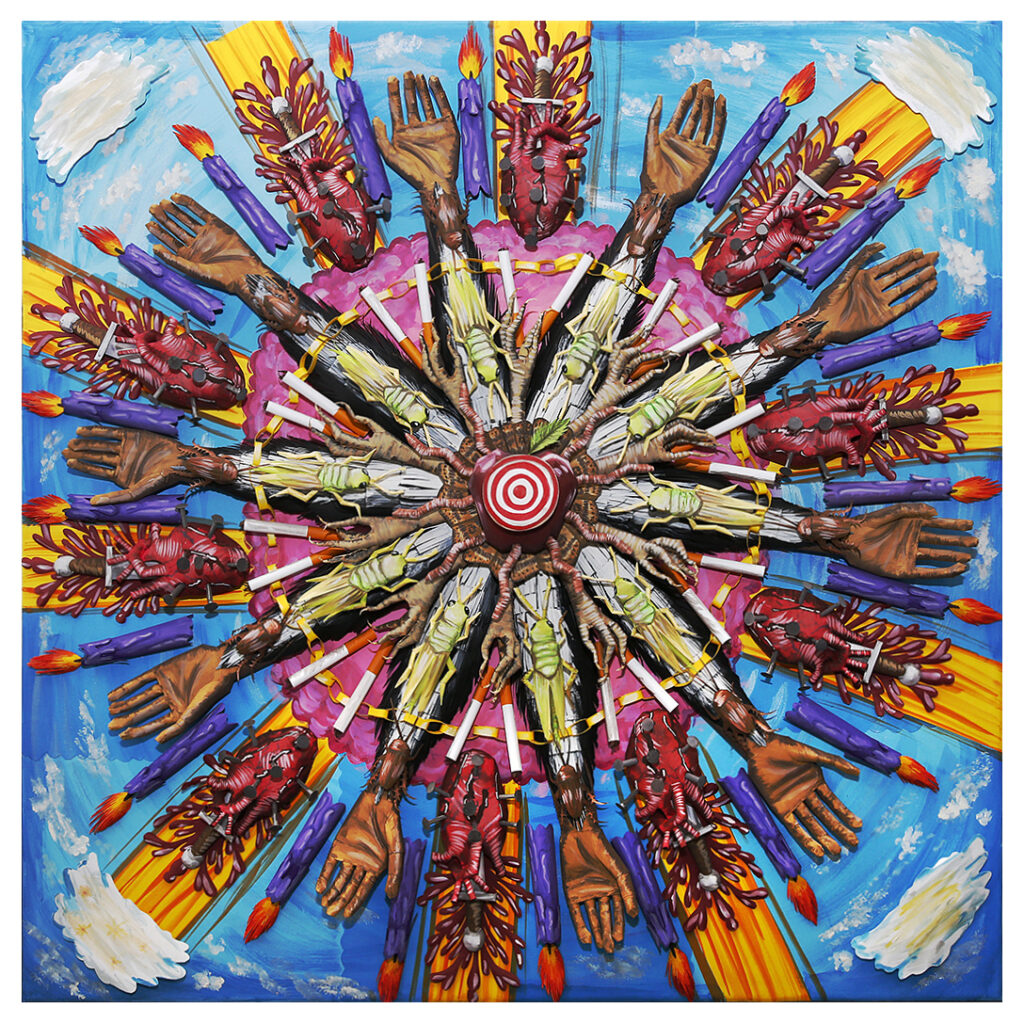
Alvarado’s 3D sculpture Diatomaceous Earth is a complex mandala composed of individually sculpted paper elements—candles, insects, cigarettes, hearts pierced by nails and daggers, and chicken feet. Teachers and guides of Eastern philosophies often suggest that creating such a figure symbolizes the transformation of a universe filled with suffering into one of joy. It can also serve as a meditative aid, helping practitioners envision a state of neutrality. For Alvarado, the creation of this piece also functions as a ritual, allowing her to symbolically remove situations, individuals, or concerns that no longer serve her.
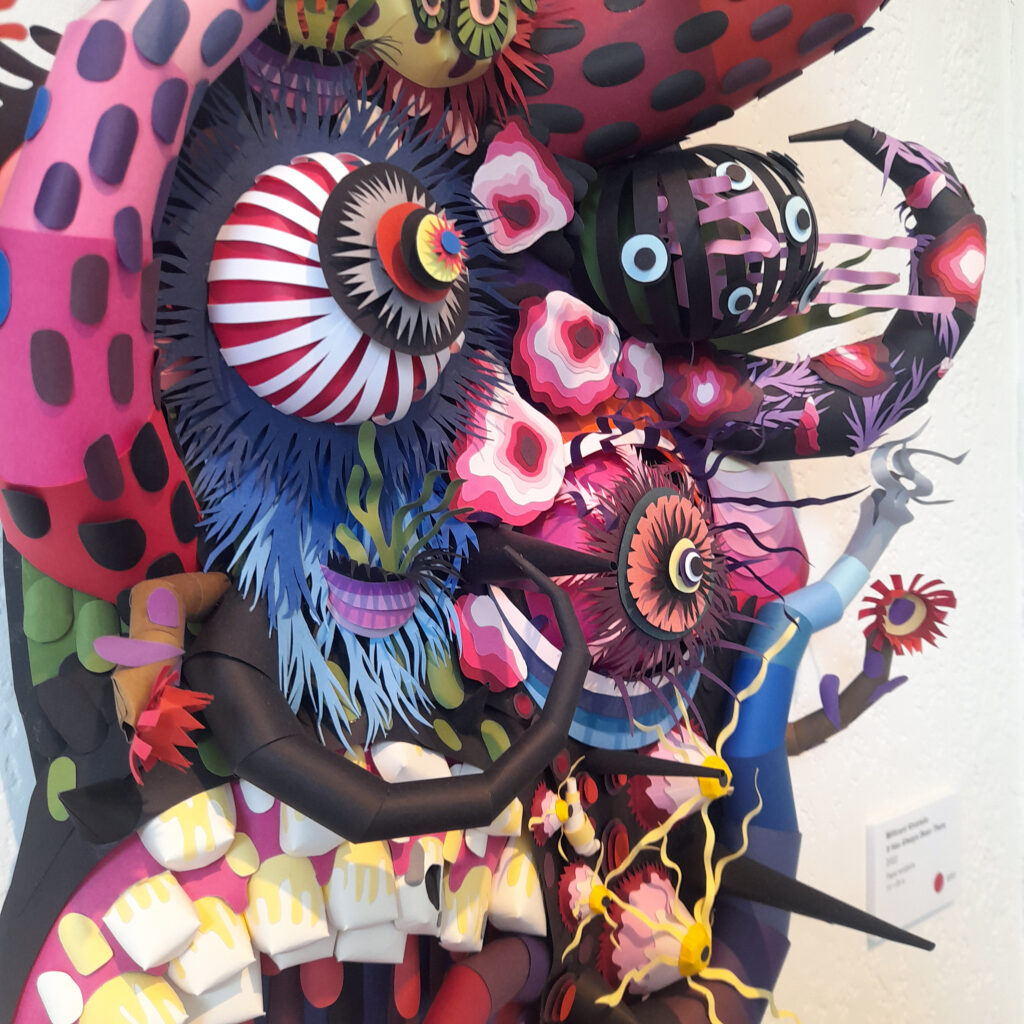
Her 3D artworks are presented unframed throughout the gallery, a notable departure from previous exhibitions in Alvarado’s hometown of Corpus Christi, where they were displayed in glass-protected shadow boxes. This choice proves insightful, as it allows viewers to closely examine the intricate details of each piece from multiple vantage points. Each figure feels as though it is emerging from hiding, confronting the viewer directly.
In her work Out of Sight, Out of Mind, Better Luck Next Time, multiple scenes unfold in a narrative, with some elements reminiscent of a comic, while others appear to burst out of the confines of the piece. Viewing the artwork from different angles reveals new details, inviting careful observation to uncover each element of the scene.
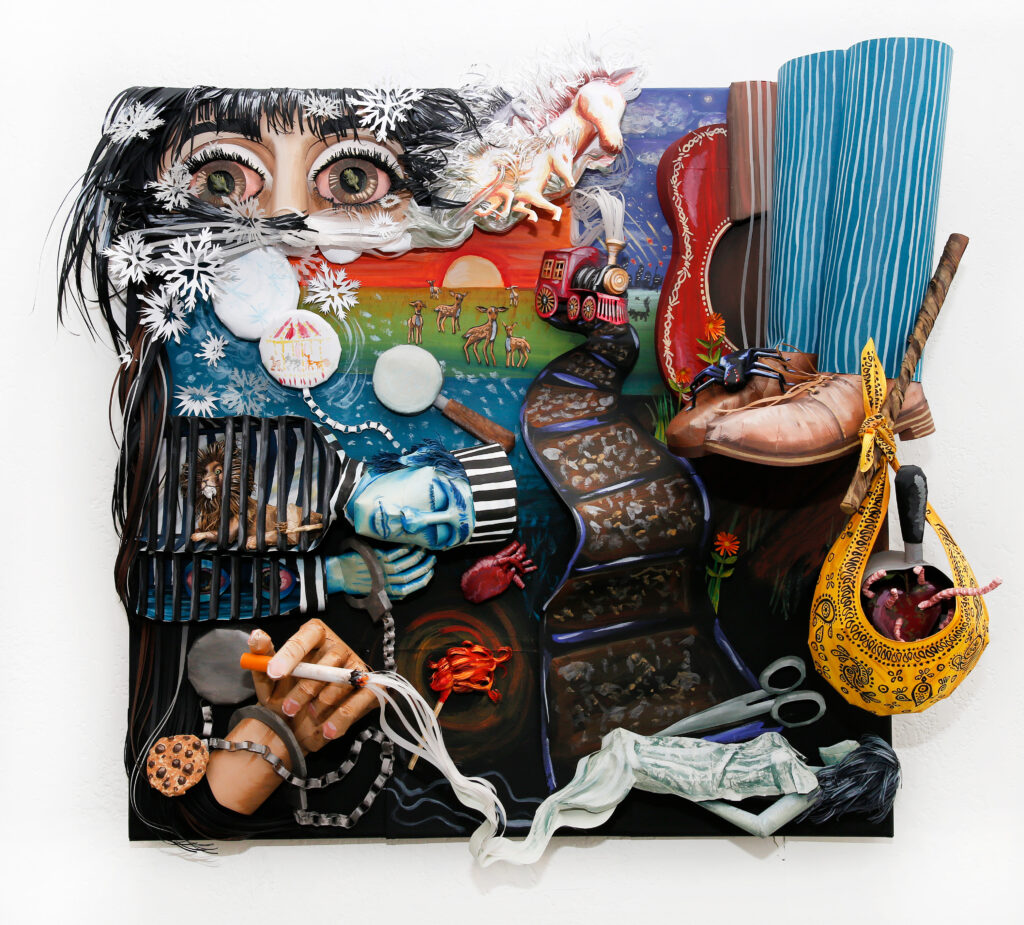
Another exciting aspect of the exposed figures is in the shadows they project on the gallery’s white walls. These shadows become an unexpected yet integral and mystical element for the piece, adding another layer of depth to Alvarado’s compositions.
One piece, in particular, captured my attention because of the way Alvarado creates the fluidity of smoke, which transforms into the ethereal figure of a woman. This transformation juxtaposes the rigidity of the paper-like material that Alvardo masterfully manages to appear as if it is vanishing only to reappear as a ghostly form.
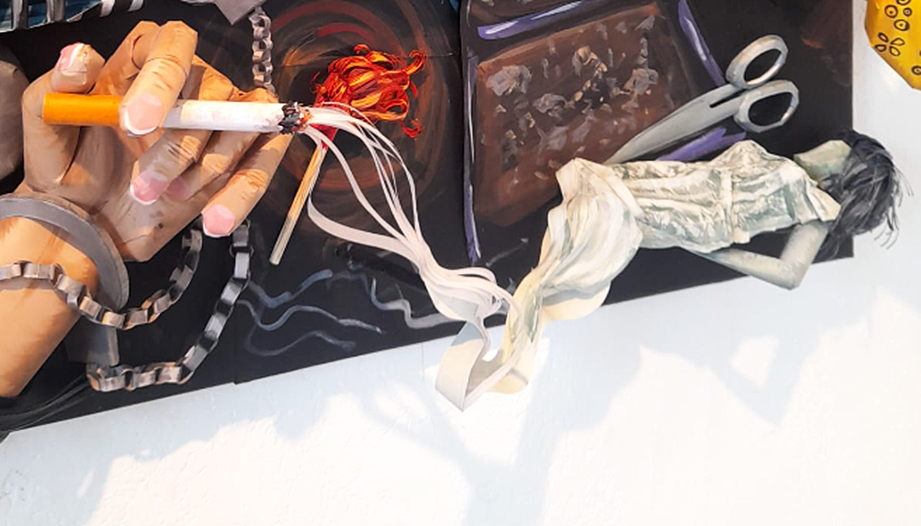
In her essay A Room of One’s Own, Virginia Woolf wrote, “A woman must have money and a room of her own if she is to write fiction.” I extend this to say that a woman needs a space in order to create anything.
In these rooms, we read, we write, we cry. Then, there comes a moment when we recognize that we can create beautiful things with our grief, love, or intensity.
Rooms are sacred spaces. I reflect on teenage girls gathering at pajama parties, where they talk about their crushes, watch movies, learn to apply makeup or paint each other’s nails as they try to make sense of the world around them. These moments are also peaceful times where they can be alone, exploring their identities in the safety of their own spaces.
In these rooms, we read, we write, we cry. Then, there comes a moment when we recognize that we can create beautiful things with our grief, love, or intensity. We can produce contemplative and meaningful art if we are fortunate enough to acknowledge our talents and develop the confidence to share them. Behind Four Eyes, Behind Four Walls evokes these sacred spaces in our minds and the memorable moments spent within those rooms.
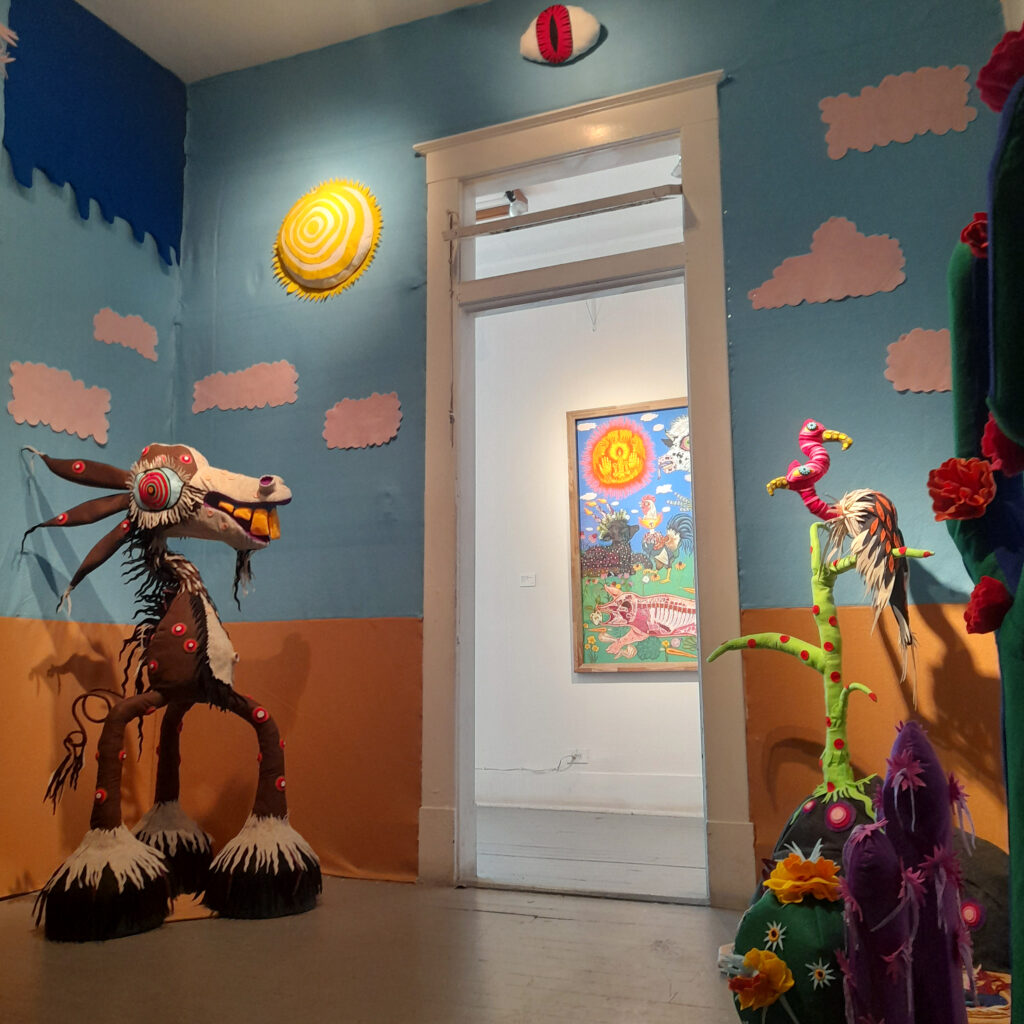
In the final room of this exhibition, Alvarado creates an immersive experience with felt and 3D figures, giving the impression of stepping inside one of her 3D paper sculptures. She invites us to enter the sacred space behind her metaphorical four eyes and four walls—a space that is not easily shared with others, offering a glimpse into the intimate world of her artistry.
Millicent, who is not yet twenty-five, will be featured alongside forty Texas-based artists this fall at Meow Wolf’s newest location in Houston, Texas. Among them are artists whose work I deeply admire for their use of color, narratives, and representation of women, such as Nela Garzón, who portrays healers like Maria Sabina, and Jasmine Zelaya, who celebrates women with browned skin in her paintings, to name a few.
I left Presa House feeling inspired and deeply moved by the next generation of young female artists who bravely and unapologetically share themselves and their work with the world.
I see something different in Alvarado’s work—a reflection of my younger self, trying to make sense of my thoughts. I wonder how my life might have been different if I had been able to explore those thoughts and create beautiful, vivid narratives like Alvarado. At that age, I was eating chocolate ice cream and watching MTV, trying to figure it all out.
I left Presa House feeling inspired and deeply moved by the next generation of young female artists who bravely and unapologetically share themselves and their work with the world. Their honesty and creativity filled me with a renewed sense of hope and admiration. They reminded me of the power of creativity and imagination in guiding us to process our existence and uncover who we truly are.
Edited by Rigoberto Luna. Photos Courtesy of Seyde Garcia and Photographer Jenelle Esparza.

